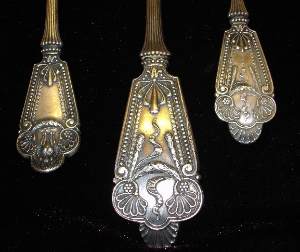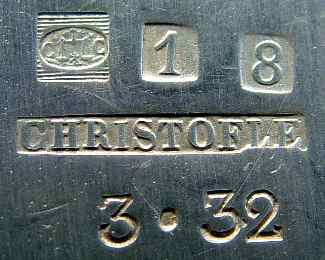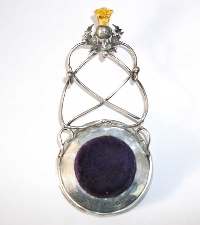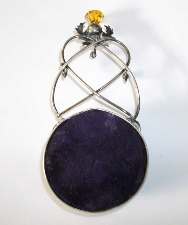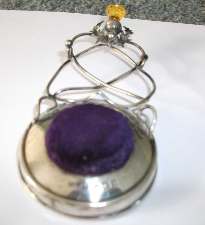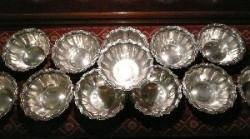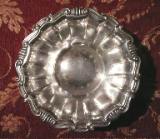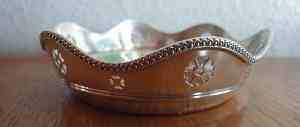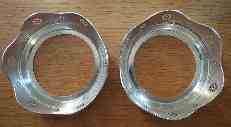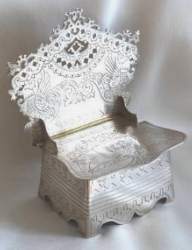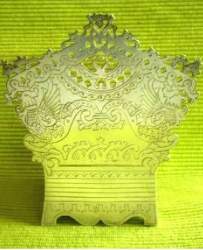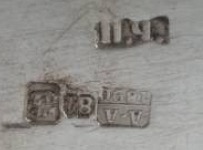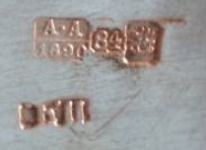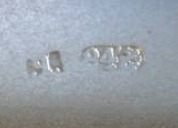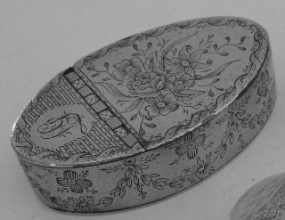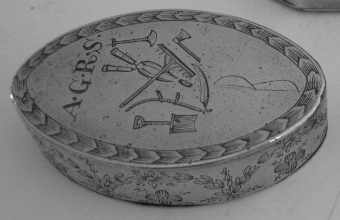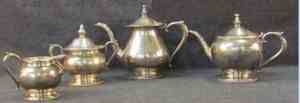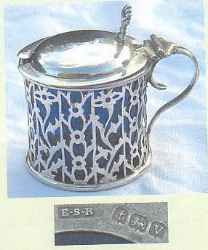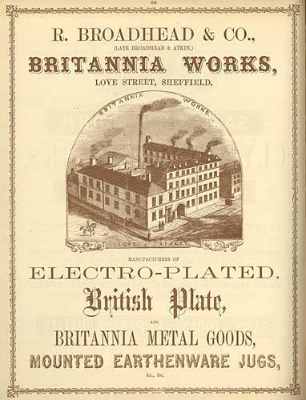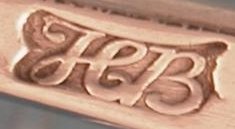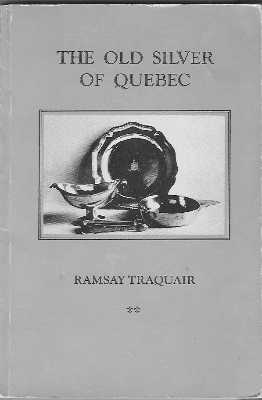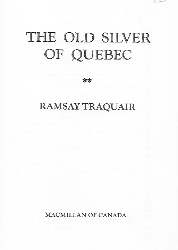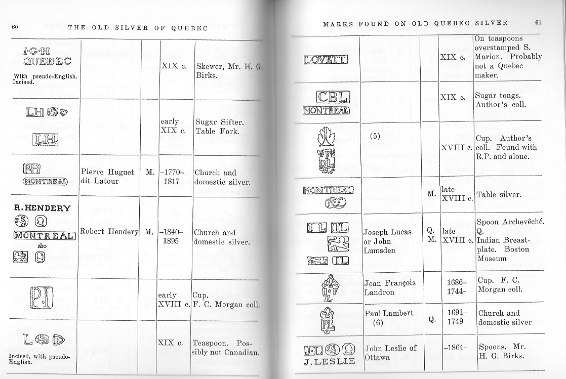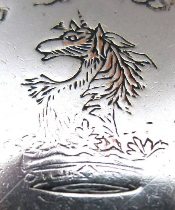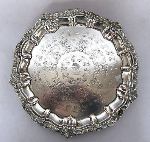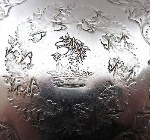 newsletter
# 73 JUNE 2010 newsletter
# 73 JUNE 2010www.ASCASonline.org SITE MAP email: silverassociation@yahoo.it |
|||||||||||||
New membersWelcome to new ASCAS members:
Johnathan Beagley - Wales UK
|
|
top page -
page map |
Members' Window # 73
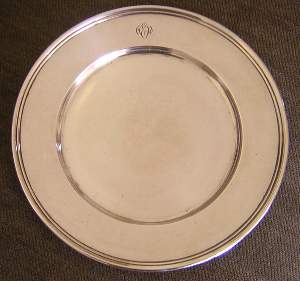
Katy Galewski presents:
|
Mail to ASCAS: e-mail silverassociation@yahoo.it
Helen writes:
... I work in a small museum in Milton, New Zealand and I have
been given this piece to identify what it might be. I thought
when looking at your site you might be able to assist.
The piece I believe is made in Birmingham 1908 with a makers
mark A ? ? I can not read the rest. It is 4 1/2 inches in length
and the base piece is 2 inches in diameter, the dark center
piece is purple velvet covering a hard material underneath, it
has 3 small hooks near the amber at top.
Thanks for your time
Helen
I suppose that your questions are: who was the maker and
what is this item?
I'm sorry but I'm unable to reply to your first question without
a complete information about the initials of the maker. About
the second question (what is this item?), I am publishing your
question in June Newsletter of ASCAS. I hope that ASCAS members
will be able to supply information about your item.
Giorgio Busetto
***ANSWER PUBLISHED IN July 2010 NEWSLETTER***
Alessandro Colemann writes:
...I bought 12 silver cups with the Italian mark 3 PA. I'd wish
to know the name of the maker. Thanks for your assistance.
Alessandro Colemann
The mark 3 PA belonged to Formosa Pietro, Via d'Olivello
71, Palermo (the firm ceased its activity).
Giorgio Busetto
Geldolph Everts writes:
...I was wondering if someone could advise me on the following.
I have two silver holders/stands (see photos) that I imagine
originally held glass containers, possibly a low model for
marmalade or a higher model for small flowers. I guess a rim low
on the glass clicked into the silver holder to fix the holder to
the glass.
The holders are by Adie Bros Ltd, Birmingham, 1928, 8 cm across
at the bottom, 10 at the top.
I imagine that the long number (Ro 655681) would have been the
product number.
I was hoping someone in our "fraterie" might have a period (catalogue)
illustration showing the size of the glass that came with the
holder. I have no illusions about finding glasses for these
items but one never knows...
Once again, many thanks for the pleasure your site provides.
Geldolph Everts
***ANSWER PUBLISHED IN July 2010 NEWSLETTER***
Maria Entrup-Henemann writes:
...Last summer I got a very fine Russian Salt Throne. 10,5 cm
high, 125 g (see pictures).
As far as I can see it is made in Moscow 1890, Assayer A.A. =
Anatoli Apollonovic Artsybaskev. But I can't identify the makers
mark.
There are Cyrillic letters (pi?che?).
Maybe you or one of the members can help.
Many thanks and kindest regards,
Maria Entrup-Henemann
The maker is Pyetr Chumakov, active in Moscow, 1883-1897.
Any further information will be appreciated.
Giorgio Busetto
Carolyn Meacham writes:
...I have a question. I have a fish handled silver plated set of
utensils with a long spoon like scoop on one and a fork like end
on the other. (Picture attached) They are marked H Ld (Harrod's
Ltd.?).
My question is what were they used for? Someone suggested for
eating anchovies or sardines. Any ideas?
Thanks,
Carolyn
I confirm that the maker's mark (better, the sponsor's
mark) belongs to Harrods Ltd (see my web site at
http://www.silvercollection.it/electroplatesilverH.html ).
I trust in ASCAS members for suggestions about the use of these
pieces.
Giorgio Busetto
Simon Buxton writes:
...Here is another query about a snuffbox that someone in the
group may be help with. Although the box is brass, my query
would be the same if it were silver.
Attached are photos of a brass snuffbox which shows the owner's
initials on top and the letters A.G.R.S. on the bottom with
engravings of contemporary farm implements.
I would like to find out what the letters stand for and confirm
its date and origin.
My guess is that it is English, dating to around 1790-1800 and
the letters relate to some sort of society or association
connected to farming.
Thanks
Simon Buxton
C.Ann Sorrell writes:
...I have recently acquired a silver plate tea and coffee set
that has a mark I can't find anywhere.
If anyone can help it would be greatly appreciated.
C.Ann Sorrell
Replies to questions
Les Salvage receives
this reply about the mark of his silver mustard pot
(see May 2010 Newsletter)
Robert Massart writes:
Regarding Les Salvage's question for which the ESB punch
stands, I can add some additional information. The full name of
this silversmith is Edward Souter Barnsley, who had his
workshops at Frederick Street in Birmingham. He was active from
1895 till 1921 and registered his mark on November 1887 and
September 1908.
Kind regards,
Robert Massart
"A PAGE per MONTH"
In this column we present a page
obtained from makers' brochures, books, auction catalogs,
advertising or whatever other printed paper, related to silver,
that may be of interest for ASCAS members.
The images will be published at a "low resolution" level and for
private and personal use only
"A WORD per MONTH"
In this column we
present an abstract from a page of the "What is? Silver
Dictionary"
courtesy of

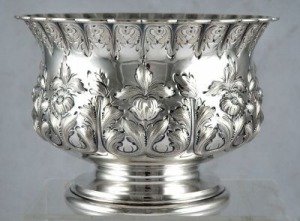
|
WASTE BOWLOrt bowls,
slop bowls, alms-dishes, voiders, waste-pots, waste
bowls... (among the many names by which these items have
been known), were used since ancient times. In their
different shapes, measures and materials they are
containers into which to put unwanted scraps and pieces
of food in order to clear the plate.
|
"A SILVERSMITH per MONTH"
In this column
we present marks, information and history of silversmiths and
silver manufacturers.
This column is published under the kind permission of Giorgio
Busetto's website 
HESTER BATEMAN AND BATEMAN FAMILYHESTER BATEMAN (1709-1794)
was the most famous 18th c. English female silversmith.
Hester was the daughter of John and Elizabeth Nedem. She
married in 1732 (at the Church of St. Botolph's,
Aldergate, in the City of London) goldsmith John Bateman,
whereby together they worked a small silversmith
business. It is believed John never held a formal
apprenticeship, which is why many Bateman pieces had
been contracted out to talented craftsmen.
|
"A BOOK ON MY SHELF"
In this column we present books, new
or ancient, dealing with silver in all its aspects (history,
marks, oddities...). This isn't a "book review" but only a fair
presentation of some useful "tools" that anyone may have in the
shelf of his bookcase.
ASCAS members are invited to contribute to this column
(click to enlarge images)
The "book on my shelf" of this month presents (courtesy Postnikov):
by
Ramsay Traquair
Macmillan of Canada - 1973
Ramsay Traquair
Macmillan of Canada - 1973
"A CREST per MONTH"
In this column we present images and descriptions of Crests and Mottoes of British, Irish and Scottish families as engraved on silver items.
Closing our June 2010 edition of ASCAS Newsletter I hope you have appreciated its content.
Your comments, suggestions and advice will be of great help.
My thanks to Simon Buxton, Alessandro Colemann, Jayne Dye, Maria Entrup-Henemann, Geldolph Everts, Lazar Freidgeim, Katy Galewski, Helen, Robert Massart, Carolyn Meacham, David N. Nikogosyan, for their invaluable contributions.
Giorgio Busetto
Secretary
ASCAS is a community of people having a common
interest in antique silver.
|
